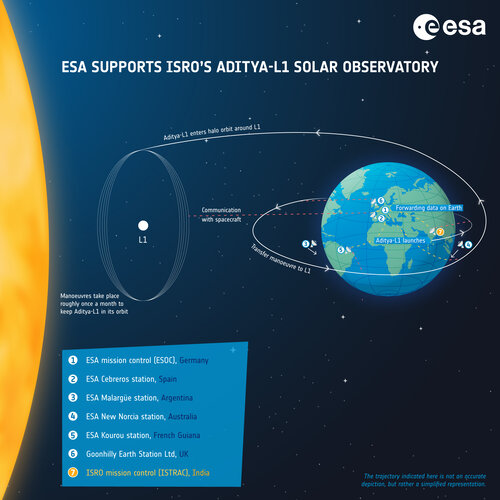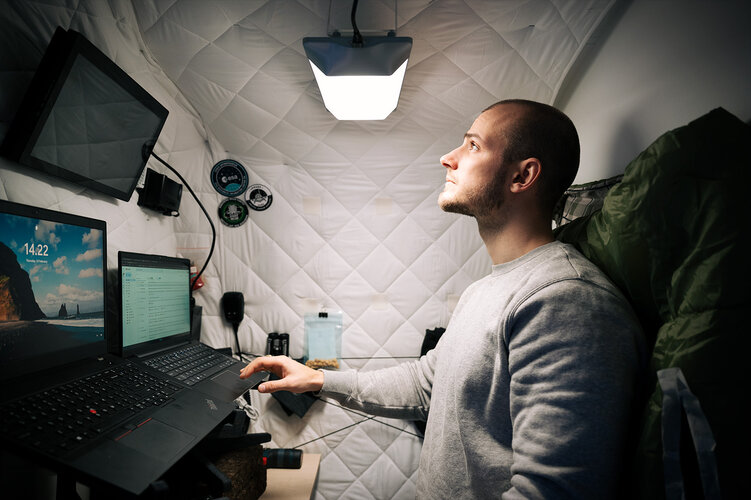
Copernical Team
Space junk in Earth orbit and on the moon will increase with future missions—but nobody's in charge of cleaning it up

There's a lot of trash on the moon right now—including nearly 100 bags of human waste—and with countries around the globe traveling to the moon, there's going to be a lot more, both on the lunar surface and in Earth's orbit.
In August 2023, Russia's Luna-25 probe crashed into the moon's surface, while India's Chandrayann-3 mission successfully landed in the southern polar region, making India the fourth country to land on the moon.
With more countries landing on the moon, people back on Earth will have to think about what happens to all the landers, waste and miscellaneous debris left on the lunar surface and in orbit.
I'm a professor of astronomy who has written a book about the future of space travel, articles about our future off-Earth, conflict in space, space congestion and the ethics of space exploration. Like many other space experts, I'm concerned about the lack of governance around space debris.
Space is getting crowded
People think of space as vast and empty, but the near-Earth environment is starting to get crowded.
Video: Muscle stimulation to enhance astronaut health

Space exploration presents unique health challenges for astronauts due to lack of gravity, isolation, and radiation exposure. ESA's SciSpacE activities aim to comprehend these effects and their implications for human well-being during extended missions.
ESA collaborates with researchers to conduct experiments in microgravity and analog environments, shedding light on the consequences of space stressors. One critical concern is muscle and bone atrophy. Despite daily exercise routines, astronauts face deterioration. ESA is investigating electrical stimulation as a potential countermeasure, with tests planned on board the International Space Station.
The Muscle Stimulation experiment is a centerpiece of this research. By applying controlled electric currents to leg muscles, the study aims to enhance muscle mass, strength, and recovery. Complementary assessments, including MRI scans, microcirculation analysis, and blood samples, will provide a comprehensive understanding of the efficacy.
Addressing these challenges could yield benefits on Earth too. The insights gained could translate to better health care for diverse populations, from the elderly to clinical patients and athletes.
Chasing Chandrayaan and the super blue Moon
 Image:
Chasing Chandrayaan and the super blue Moon
Image:
Chasing Chandrayaan and the super blue Moon Lagrange Points
 Image:
Lagrange Points
Image:
Lagrange Points How is ESA supporting ISRO’s Aditya-L1 solar mission?

A good night’s sleep in orbit

During his Huginn mission, ESA astronaut Andreas Mogensen will run two experiments focusing on sleeping in space: Circadian Light and Sleep in Orbit.
Last 'Super Blue Moon' until 2037
 Astronomy enthusiasts are in for a treat Wednesday night: a rare "super blue Moon" that won't be seen again for more than a decade.
Supermoons occur when the Moon passes through its perigee, or the point that takes it closest to Earth during its elliptical orbit. This makes it look about 14 percent bigger compared to when it is at its furthest point, and a touch brighter.
Full Moons are
Astronomy enthusiasts are in for a treat Wednesday night: a rare "super blue Moon" that won't be seen again for more than a decade.
Supermoons occur when the Moon passes through its perigee, or the point that takes it closest to Earth during its elliptical orbit. This makes it look about 14 percent bigger compared to when it is at its furthest point, and a touch brighter.
Full Moons are Picogrid, building a more open defense ecosystem, clinches $950m Air Force IDIQ contract
 Picogrid has been awarded a $950,000,000 ceiling Indefinite Delivery/Indefinite Quantity contract for the maturation, demonstration and proliferation of capability across platforms and domains, leveraging open systems design, modern software and algorithm development in order to enable Joint All Domain Command and Control (JADC2).
This multiple award contract provides awardees the opportun
Picogrid has been awarded a $950,000,000 ceiling Indefinite Delivery/Indefinite Quantity contract for the maturation, demonstration and proliferation of capability across platforms and domains, leveraging open systems design, modern software and algorithm development in order to enable Joint All Domain Command and Control (JADC2).
This multiple award contract provides awardees the opportun Northrop Grumman delivers mini laser to US Government
 Northrop Grumman Corporation (NYSE: NOC) has delivered a miniaturized high-energy laser source to the U.S. government. The laser is ruggedized for field use and miniaturizing it allows for rapid placement in tactical situations.
The 10kW class high-energy laser, known as Phantom, is about 12 cubic feet (nearly the size of a mini fridge).
Weighing less than 200 pounds, it enables lift
Northrop Grumman Corporation (NYSE: NOC) has delivered a miniaturized high-energy laser source to the U.S. government. The laser is ruggedized for field use and miniaturizing it allows for rapid placement in tactical situations.
The 10kW class high-energy laser, known as Phantom, is about 12 cubic feet (nearly the size of a mini fridge).
Weighing less than 200 pounds, it enables lift Umbra selected by AFWERX for SBIR Phase II Contract
 Umbra, a leader in advanced space radar technology, announced it has been selected by AFWERX for a SBIR Phase II contract in the amount of $1.25 million focused on Space-Based Moving Target Indication (MTI) to address the most pressing challenges in the Department of the Air Force (DAF). Umbra will leverage its market leading wide-bandwidth, affordable space systems, uniquely operating in paired
Umbra, a leader in advanced space radar technology, announced it has been selected by AFWERX for a SBIR Phase II contract in the amount of $1.25 million focused on Space-Based Moving Target Indication (MTI) to address the most pressing challenges in the Department of the Air Force (DAF). Umbra will leverage its market leading wide-bandwidth, affordable space systems, uniquely operating in paired 